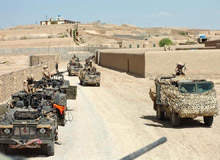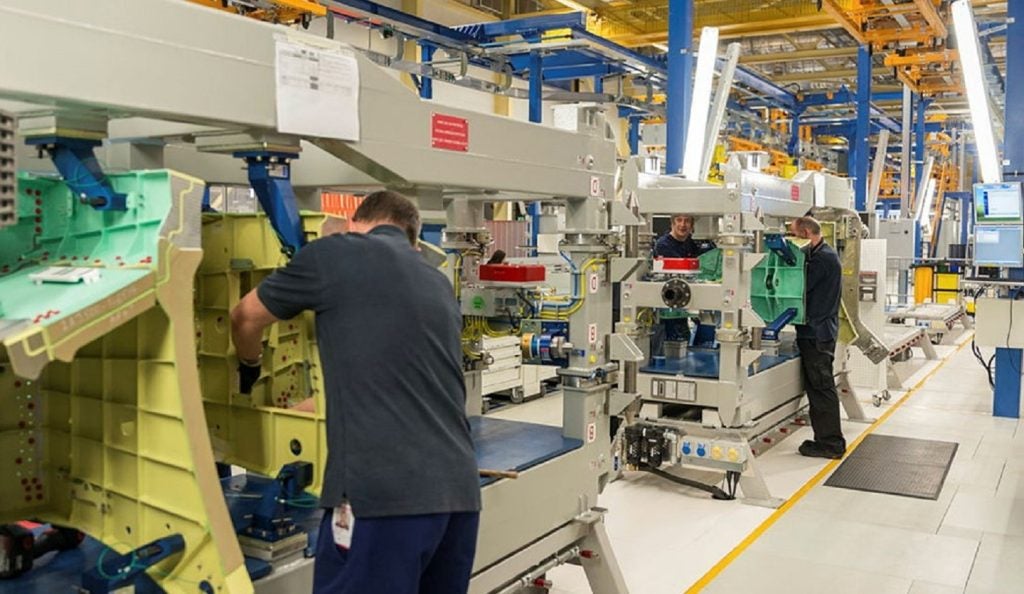
Due to the lengthy nature of deployment in Iraq and Afghanistan, the UK’s back office has been forced to address both short and long-term requirements. The back office supports the UK’s deployed forces in a range of ways. Overseas operations are dependent on an efficient and effective supply of materials and equipment, which must be up to the tasks involved – all the way through to the post-conflict period and beyond. Furthermore, the well-being of serving troops must be ensured through facilities that cater for the rigours of today’s operations and the needs of post-deployment.
With this in mind, British current affairs publication New Statesman organised a high-profile round table discussion that recognised the growing importance of the military support chain. A strong focus was put on the positive and valuable roles the military play in complementing the UK’s foreign policy and international development agenda. It also highlighted opportunities to share and transfer best practice in areas such as civil governance, healthcare and resource management.
Equipped to deal with the matter in hand
The ongoing support of urgent operational requirements (UORs) is likely to place increasing stress on the military support chain at a time of economic downturn and uncertainty over future military initiatives. There is a possibility that the rising demand for military capability and equipment reliability at lower costs could create tension or vulnerability in the support chain. Former Secretary of State for Defence John Hutton, who stood down from his position following Prime Minister Gordon Brown’s cabinet reshuffle in June 2009, has therefore outlined the changing nature of operations, particularly in Afghanistan.
“The issue of equipment is fundamental. The equipment available in theatre now is the best that it has been, according to those in theatre,” Hutton says. “I think the protective mobility programme we have invested in has been very substantial. The firepower of the infantry has been dramatically improved. We have a much more capable body of soldiers, capable not just of defending themselves effectively but also of taking the fight to the insurgents in a way that has not always been the case.
See Also:
“Now, that has not happened by accident. It has been a lot of effort, policy effort, a lot of resources have gone into re-equipping and retooling British forces in Afghanistan, and we have a very capable force in there. Not every procurement challenge has been met and mastered. There is more we are going to need to do as the nature of the security challenge we face there changes. It has gone through a very substantial change in the past 12 to 18 months in Afghanistan.”
How well do you really know your competitors?
Access the most comprehensive Company Profiles on the market, powered by GlobalData. Save hours of research. Gain competitive edge.

Thank you!
Your download email will arrive shortly
Not ready to buy yet? Download a free sample
We are confident about the unique quality of our Company Profiles. However, we want you to make the most beneficial decision for your business, so we offer a free sample that you can download by submitting the below form
By GlobalDataPartnering industry
The merger of Ministry of Defence (MoD) departments to form the Defence Equipment and Support Department (DE&S) in 2007 was seen as a major step forward in simplifying and securing efficiencies in the supply chain. It has been realised since, however, that further integration of financial, planning and commercial processes is still required.
The military support chain often has to deal with uncertainty over funding, delays to programmes, unpredictability of demand, long and detailed competitive processes – all of which potentially can drive up costs and negate improvements.
The defence industrial strategy began addressing some of these issues when it was introduced in 2005 by proposing longer-term partnering arrangements with major equipment providers. The idea is that longer-term contracts and collaborative relationships with industry flow down through the support chain and enhance its stability and realise efficiencies through closer working, simplification of requirements and clear information flows.
There has, however, been mixed responses to its actual work-in-progress. The commercial director for the Ministry of Defence, Amyas Morse, says he believes the programme is still alive and kicking.
“The defence industrial strategy is not just a bit of paper. It is how we work with the defence industry – as partners and colleagues, solving complex problems in a business-like and open way. So it is important to keep on publishing and developing policy. In fact, during the time since the first defence industrial strategy, we have continued discussions with industry, working on and developing shared policy views,” says Morse.
“I think we have started building a way of working closely in industry and we have made great progress. It is definitely fully open, but on a systems-integrated basis with a lot of our suppliers we could work better together then we do now. If we actually allow information to drive our work together, we will get more efficient and faster than even we are, and we are improving.”
Future thinking
The use of optimised support planning to better understand the forward demand for equipment and spares has also allowed the MoD’s support chain work to progress. Such a system needs to be continuously rolled out across all areas to improve availability across all capabilities.
Evidence of such an approach proving successful can be found with defence ministries in France and The Netherlands, which have understood the need for an integrated approach to planning and are both investing in single enterprise-wide systems.
The DE&S is reportedly considering options through the future logistics information services programme, to integrate the legacy of systems currently in operation. This work is likely to focus on the business intelligence required to improve operations and reduce support costs.
Some sources, however, believe that to simplify, secure and seek efficiencies in the military support chain, further investment is required in the people, the process and the systems. Hutton says he does not feel this is exactly true.
“We have the adequate resources we need to the job. I think if here is one area that is fundamentally critical, where we have to focus our effort and resources, it is the civilian military strategy and the joins between the two. Modern counterinsurgency operations are at the heart of it,” Hutton says.
“The British soldiers are a phenomenal body of people and do a brilliant job, but I think it is joining up this very complicated suite of tools and instruments and policy. That is where the heat is. That is where we have to do better.”
Parts of this article first appeared in our sister publication New Statesman. A transcription of the round table discussion can be found at: http://www.newstatesman.com/page/force-for-good




